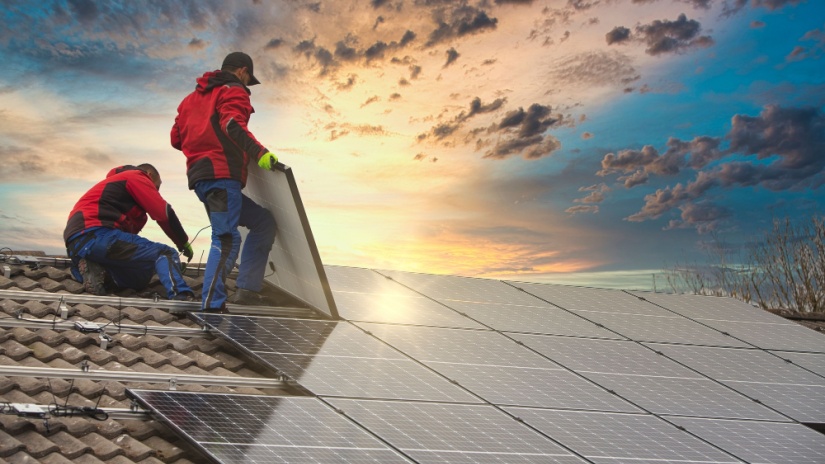Knowledge Centre
Is solar worth it?

With electricity prices fluctuating and the national push toward renewables gaining momentum, many Australians are turning to solar energy as a potential solution to rising power bills.
But is solar really worth the investment? The answer depends on how well you understand your energy bill- and whether you're assessing it as a whole, rather than focusing on individual elements like feed-in tariffs alone.
Here’s how to take a step back and look at your energy bill holistically so you can make a truly informed decision about whether solar is right for you.
What does it mean to read your energy bill holistically?
Reading your energy bill holistically means understanding how all the components - usage, supply charges, feed-in tariffs, discounts, and usage patterns - interact to affect your bottom line.
Too often, people zero in on one component (usually the feed-in tariff) and assume that a high rate equals high savings. But in truth, a generous feed-in tariff could be offset by higher daily supply charges, usage rates, or lower discounts elsewhere on your plan.
When deciding if solar is worth the investment, you must look at how your entire bill functions - not just one line item.
Why you shouldn’t focus solely on feed-in tariffs
Feed-in tariffs (FiTs) refer to the rate your energy provider pays you for excess solar energy exported back to the grid. While FiTs are important, these can be misleading if viewed in isolation:
- FiTs fluctuate: Rates often rise and fall in response to supply and demand, wholesale prices, and government policies. A higher FiT today may not be available in a year or two.
- Low export = low benefit: If you consume most of your solar power during the day and export little to the grid, a high FiT won’t contribute much to your savings.
- Higher FiT, higher usage rates? Some providers offer enticing FiTs but balance this out with expensive usage charges, which could mean you pay more for the power you still need to buy.
Bottom line: A high FiT doesn’t guarantee better value if the rest of your plan isn’t competitive.
Key components you should review together
Here’s how to evaluate your energy bill as a whole:
Daily supply charge
This is the fixed daily fee just to be connected to the grid. It’s payable even if you use no electricity. Some solar-friendly plans with high FiTs also come with significantly higher supply charges.
Usage charges (per kWh)
This is what you pay for electricity you use when your solar system isn’t generating—typically in the evening or on cloudy days. A plan with lower usage rates might offer more savings than one with a higher FiT.
Feed-in tariff
Check how much you’re paid per kilowatt-hour of solar exported. Ensure it’s not offset by higher charges elsewhere. Also, confirm whether the FiT is fixed or subject to change.
Discounts and promotions
Many retailers offer discounts for paying on time or via direct debit. Understand the fine print—some apply only to usage charges, not your total bill.
Solar system efficiency
Your potential savings also depend on how much energy your solar panels produce and how much you self-consume versus export. If your solar generation is high but your daytime usage is low, the FiT becomes more important - but still isn’t the full story.
Real-life example: the FiT trap
Let’s say you’re comparing two plans:
- Plan A: 15c FiT, 42c/kWh usage rate, $1.50 daily supply charge
- Plan B: 5c FiT, 27c/kWh usage rate, $1.05 daily supply charge
If you export a lot of solar power, Plan A might seem more appealing. But if you still draw significant electricity from the grid - especially in the evenings - Plan B may actually result in a lower total bill.
This is why you should evaluate all elements of the bill, not just the feed-in tariff.
Understand your usage profile
To determine if solar is worth it, you must understand:
- When you use energy (e.g. day vs night usage)
- How much you consume monthly
- How much solar you will use vs export
Households that are home during daylight hours tend to benefit more from solar, as they self-consume more of the energy they generate. Households that use more power in the evenings may still rely heavily on grid electricity, reducing the immediate benefit of solar unless battery storage is installed.
Tips for evaluating solar as an investment
- Use your actual bills: Assess your last few bills to estimate your average usage and potential savings.
- Get a detailed quote: Choose a reputable solar installer who can provide a clear breakdown of ROI and performance over time.
- Watch out for ‘too good to be true’ plans: Sometimes plans with high FiTs have hidden trade-offs.
- Consider future needs: If you plan to add an electric vehicle or increase your home’s energy demands, factor this into your solar decision.
Call Compare Energy to learn more
Solar power can be a fantastic long-term investment - but only when viewed in the context of your entire energy usage and bill.
Rather than focusing narrowly on feed-in tariffs, Australian energy customers should look at:
- Daily supply charges
- Usage rates
- Discounts
- How and when they use energy
- The true cost of electricity consumed and exported
By reading your energy bill holistically, you’re more likely to find a plan (and a solar setup) that genuinely saves you money. Need help comparing energy plans or understanding your solar options?
Call Compare Energy on 1300 790 106 to speak to an energy expert. We’ll help you review your bill and find the best provider or solar-friendly plan for your needs.

